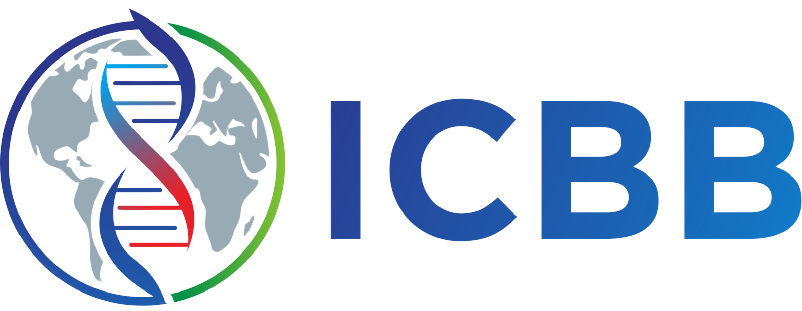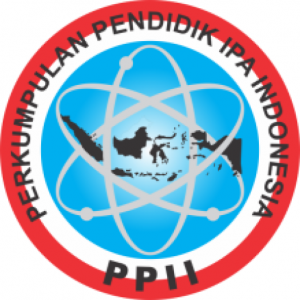Behavioral Patterns and Honey Yield Between Native and Non-native Stingless Bees in Bali's Ecosystem
Authors
I Wayan Wahyudi , Anak Agung Komang SuardanaDOI:
10.29303/jbt.v25i1.8323Published:
2025-01-11Issue:
Vol. 25 No. 1 (2025): Januari - MaretKeywords:
Apiculture, Bali, foraging behavior, interspecific competition., honey production, species adaptation.Articles
Downloads
How to Cite
Downloads
Metrics
Abstract
The coronavirus disease 2019 (COVID-19) pandemic has led to significant growth in honey bee cultivation in Bali, leading to the introduction of nonnative bee species alongside the indigenous Tetragonula laeviceps. However, the 75% failure rate of nonnative species cultivation between 2020 and 2023 necessitated a deeper understanding of species adaptability in the Bali ecosystem. This study specifically examined the behavioral adaptation and honey production of Heterotrigona itama compared with those of Tetragonula laeviceps in a shared cultivation environment. A seven-month comparative experimental study involving 30 bee colonies (15 H. itama introduced from Lampung and 15 local T. laeviceps) was conducted. Time series sampling was employed at three daily intervals (09:00, 13:00, and 16:00) for behavioral observations, while honey production was measured via nondestructive vacuum extraction. H. itama demonstrated superior honey production (516.3 ml average) to that of T. laeviceps (213.3 ml average). The species exhibited distinct foraging preferences, with T. laeviceps favoring Jatropha integerrima and H. itama preferring Antigonon leptopus and Xanthostemon chrynsanthus. Both species have developed different adaptive strategies for nectar–water content management, with H. itama utilizing sun exposure and T. laeviceps employing smaller storage pots. This study revealed successful coexistence between native and nonnative species through differentiated foraging behaviors and resource utilization strategies, with H. itama showing greater productive capacity attributed to morphological and behavioral differences.
References
Adnyana, I. M. D. M. (2021). Populasi dan Sampel. In M. Darwin (Ed.), Metode Penelitian Pendekatan Kuantitatif (1st ed., pp. 103–116). Bandung: CV. Media Sains Indonesia.
Ador, K., Gobilik, J., & Benedick, S. (2023). Phylogenetic and Morphological Characteristics Reveal Cryptic Speciation in Stingless Bee, Tetragonula laeviceps s.l. Smith 1857 (Hymenoptera; Meliponinae). Insects, 14(5), 438. doi: 10.3390/insects14050438
Alves-dos-Santos, I., Melo, G. A. R., & Alves-dos-Santos, I. (2003). Apoidea Neotropica: Homenagem aos 90 Anos de Jesus Santiago Moure. Criciúma, SC: Editora UNESC.
Arena, M. V. N., Toppa, R. H., Martines, M., & Alves-dos-Santos, I. (2023). Release experiments as an indicator of flying activities of stingless bees in urban areas. Frontiers in Sustainable Cities, 4, 1103835. doi: 10.3389/frsc.2022.1103835
Arifiyanto, A., Nukmal, N., Pratami, G. D., & Lestari, E. R. (2022). Trigona Honey Bee Cultivation as a Sustainable Agricultural Alternative in Bandarsari Village, Padangratu District, Central Lampung Regency. Abdimas Talenta: Jurnal Pengabdian Kepada Masyarakat, 7(2), 811–818. doi: 10.32734/abdimastalenta.v7i2.8918
Emil, M. F. P., Priawandiputra, W., Kahono, S., & Atmowidi, T. (2024). Diversity and nesting ecology of Indo-Malayan stingless bees (Hymenoptera: Apidae) in Aceh Province, Indonesia. Biodiversitas Journal of Biological Diversity, 25(10), d251023. doi: 10.13057/biodiv/d251023
Gouw, M. S., & Gimenes, M. (2013). Differences of the Daily Flight Activity Rhythm in two Neotropical Stingless Bees (Hymenoptera, Apidae). Sociobiology, 60(2), 183–189. doi: 10.13102/sociobiology.v60i2.183-189
Kartikasari, D., Muslimin, M. A. I. I., & Putri, D. F. A. (2023). Budidaya lebah klanceng di peternakan azka trigona Desa Jiwut, Kabupaten Blitar. Radikula : Jurnal Ilmu Pertanian, 2(2), 100–112. Retrieved from https://scholar.google.com/scholar?start=60&q=manfaat+madu+bagi+kesehatan&hl=id&as_sdt=0,5#d=gs_qabs&t=1711269306486&u=%23p%3DL_4QBNg0e6AJ
Nogueira, D. S., Rasmussen, C., & Oliveira, M. L. (2021). A New Species of Tetragona Lepeletier & Serville, 1828 from the “truncata group” and New Distribution Records of T. truncata Moure, 1971 (Hymenoptera: Apidae). Neotropical Entomology, 50(1), 68–77. doi: 10.1007/s13744-020-00822-6
Paulus, A. Y., Sulaeman, Mayasari, A. C., Ayu, J. D., Musniati, N., Sari, M. P., … Adnyana, I. M. D. M. (2023). Biostatistika Epidemiologi (1st ed.; H. Akbar, Ed.). Bandung: CV. Media Sains Indonesia.
Putra, H. A. P., Ni, W. L., & Ni, S. M. (2014). Structure and production of stingless bee Trigona spp. in cylindrical and round nest types. Jurnal Biologi, 18(2), 60–64.
Putra, R. E., Novitasari, N., Rosmiati, M., Husna, I. Z., Setiyarni, E., & Kinasih, I. (2024). Efisiensi Penyerbukan Tetragonula laeviceps Pada Budi Daya Tumpang Sari Tomat Dan Mentimun Di Greenhouse. Al-Kauniyah: Jurnal Biologi, 17(2), 293–302. doi: 10.15408/kauniyah.v17i2.29769
Roubik, D. W. (2020). Nest Structure: Stingless Bees. In Encyclopedia of Social Insects (1st ed., pp. 1–6). Cham: Springer International Publishing. doi: 10.1007/978-3-319-90306-4_147-1
Sayusti, T., Raffiudin, R., Kahono, S., & Nagir, T. (2021). Stingless bees (Hymenoptera: Apidae) in South and West Sulawesi, Indonesia: morphology, nest structure, and molecular characteristics. Journal of Apicultural Research, 60(1), 143–156. doi: 10.1080/00218839.2020.1816272
Schaller, A., Dalmazzo, M., Decarre, J., Caluva, E. C., & Galvani, G. L. (2024). Flight activity behavior of stingless bee (Apidae: Meliponini) in an urban park outside their natural range: the influence of hive temperature. Journal of Apicultural Research, 1–12. doi: 10.1080/00218839.2024.2380935
Sulaeman, A., Fikri, A. M., Kalsum, N., & Mahani, M. (2019). Trigona Propolis and Its Potency for Health and Healing Process. In The Role of Functional Food Security in Global Health (pp. 425–448). Netherlands: Elsevier B.V. doi: 10.1016/B978-0-12-813148-0.00025-6
Wulandari, A. P., Atmowidi, T., & Kahono, D. S. (2017). The Role of Trigona laeviceps (Hymenoptera: Apidae) in Seed Production of Kale (Brassica oleracea var. alboglabra). Jurnal Agronomi Indonesia (Indonesian Journal of Agronomy), 45(2), 196. doi: 10.24831/jai.v45i2.13236
Author Biographies
I Wayan Wahyudi, Department of Biology, Faculty of Information Technology and Science, Universitas Hindu Indonesia
Department of Biology, Faculty of Information Technology and Science, Universitas Hindu Indonesia
Anak Agung Komang Suardana, Department of Biology, Faculty of Information Technology and Science, Universitas Hindu Indonesia
Department of Biology, Faculty of Information Technology and Science, Universitas Hindu Indonesia
License
Copyright (c) 2025 I Wayan Wahyudi, Anak Agung Komang Suardana

This work is licensed under a Creative Commons Attribution 4.0 International License.

Jurnal Biologi Tropis is licensed under a Creative Commons Attribution 4.0 International License.
The copyright of the received article shall be assigned to the author as the owner of the paper. The intended copyright includes the right to publish the article in various forms (including reprints). The journal maintains the publishing rights to the published articles.
Authors are permitted to disseminate published articles by sharing the link/DOI of the article at the journal. Authors are allowed to use their articles for any legal purposes deemed necessary without written permission from the journal with an acknowledgment of initial publication to this journal.


























